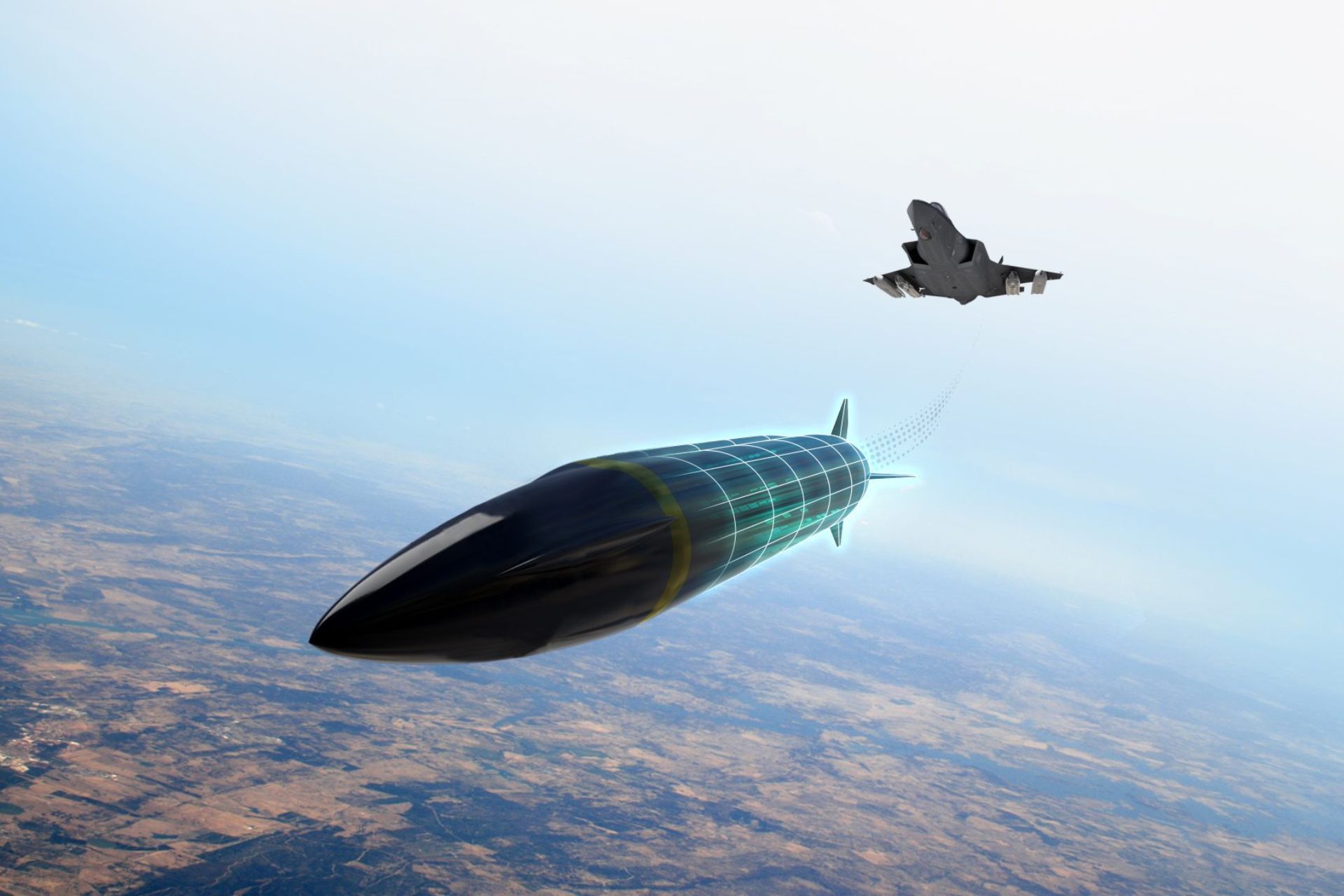Breaking News
FOCUS | How MAKO Hypersonic Missile Will Change F-22 & F-35 Air Attack.
The U.S. Air Force's 5th-generation aircraft will soon be capable of firing an air-launched hypersonic missile that can destroy targets at a safe distance at five times the speed of sound. This development is expected to introduce new tactics and operational concepts in the field of aerial attacks. Unveiled in April 2024 at the Sea Air Space exhibition, the development of the MAKO missile began in 2017, and it is designed to provide rapid strike capability against a variety of targets, including air defense systems and ballistic missiles, within the context of anti-access/area denial (A2/AD) strategies.
Follow Army Recognition on Google News at this link

Lockheed Martin Mako Missile presented as 3D Model (Picture source: X/@AkelaFreedom)
The MAKO missile, built by Lockheed-Martin, is designed to strike enemy ships, ground vehicles, or air defenses, using its closing speed as a revolutionary advantage to evade detection. The missile has already been "tested" on a variety of aircraft, including the F-22, F-35, F/A-18, F-16, F-15, and P-8 Poseidon fighter jets.
According to its designers, one of the advantages of the MAKO is that it is built through a digital engineering process, meaning that interfaces, technical standards, software, and integration specifics can all be coordinated through computer simulation. Thanks to digital engineering development, key performance parameters and weapon specifications can be precisely reproduced using computer simulations, allowing for a wide range of variants and adaptations to be created from a single design model. Essentially, there is no need to build multiple independent variants, as software and computing adjustments can be made to tailor the weapon to specific mission requirements. Various warheads, seekers, guidance technologies, and even explosives can be digitally customized and configured, then manufactured for use in the weapon, a scenario that speeds up production and variety to give commanders a wide range of options. As with many weapons, software and hardware upgrades can be digitally implemented and then quickly produced and integrated to adapt the weapon to new emerging threats.
Since it is built with digital engineering, the MAKO can also be configured to be fired from bombers, a development that gives commanders a broader range of potential attack options. Advances in computer simulation have made it possible to assess weapon performance parameters in the digital realm before manufacturing, creating a situation where technology significantly accelerates the production curve and operational versatility.

Artist's illustration of Stand-in Attack Weapon, missile shot from a F-22. (Picture source: Lockheed Martin)
Hypersonic Advantage
The tactical advantages of an air-launched hypersonic projectile are simple and clear: it impacts and is related to attack speed and impact. A projectile traveling at five times the speed of sound presents a significant dilemma for air defenses, which are likely to be hit and destroyed before there is a chance to develop a "track" on the target and intercept it. The concept is similar when attacking enemy surface ships or ground vehicle formations, as ship commanders likely do not have enough time to develop a track on an incoming target in time to jam, block, intercept, or destroy it. The concept of a hypersonic weapon is to overwhelm an enemy with attack speed, provided the weapon can maintain hypersonic speeds and close in on its target with extreme precision.
MAKO vs. Chinese YJ-21
The arrival of the MAKO is quite significant given the emergence of China's YJ-21 hypersonic missile, as it suggests that the United States could close the gap with China in the ongoing hypersonic weapons race. China has not only fired a naval variant of the YJ-21 launched from a ship but has also armed its H-6K bomber with an air-launched hypersonic YJ-21 weapon, a circumstance that undoubtedly puts considerable pressure on the U.S. to match or counter the threat. If the MAKO performs as expected, and all indications are that it will, it is conceivable that the weapon could match the speed of rapidly emerging Chinese hypersonic weapons.


























